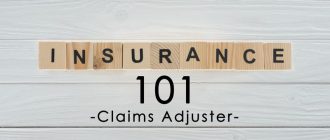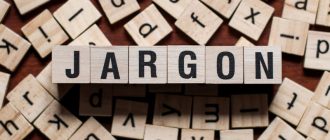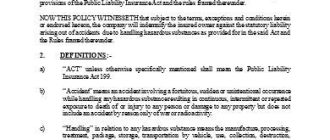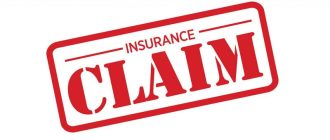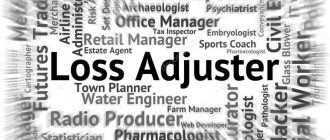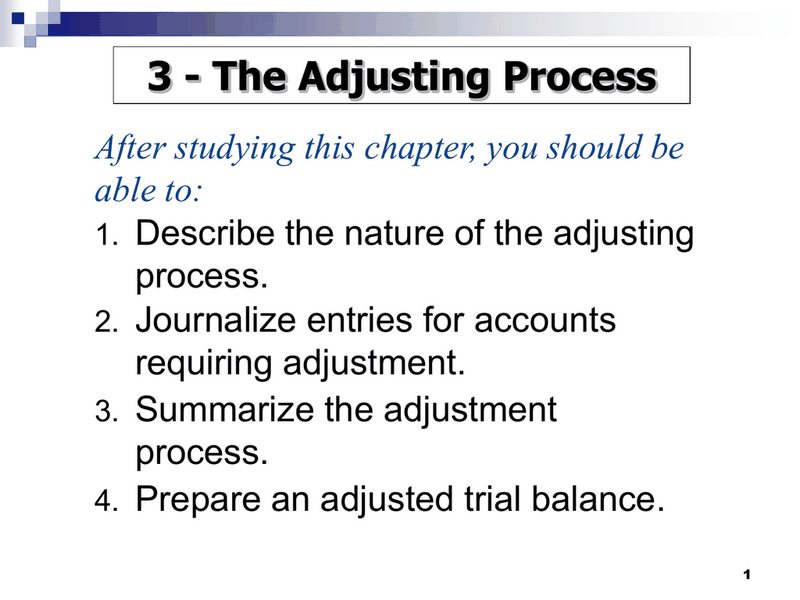
The Role of Photographs and Videos in the Adjusting Process.
Photographs and videos play a significant role in the process of adjusting to new environments, experiences, and challenges. These visual mediums have the power to capture moments, emotions, and memories that shape our perceptions and understanding of the world around us. Whether it is traveling to a foreign country, starting a new job, or going through a personal transformation, photographs and videos provide us with a tangible representation of our experiences.
When we are faced with unfamiliar situations, photographs and videos can serve as valuable tools for orientation and identification. They allow us to visually explore and familiarize ourselves with new surroundings, landmarks, and people. By providing a visual reference, these mediums help us comprehend and navigate the unknown, reducing anxiety and uncertainty in the adjusting process.
Moreover, photographs and videos evoke emotions and memories, reminding us of past experiences and connecting us to our sense of self. They capture moments of joy, sorrow, excitement, and contemplation, allowing us to reflect on our journey and progress. In times of doubt or difficulty, revisiting these visual reminders can provide us with motivation and encouragement to keep moving forward.
In addition to personal growth and self-reflection, photographs and videos also have a communal aspect. They enable us to share our own experiences and perspectives with others, fostering empathy and understanding. By sharing these visual narratives, we can build connections, create dialogue, and bridge cultural and generational gaps. This exchange of ideas and stories further enriches the adjusting process by broadening our perspectives and challenging our assumptions.
Understanding the Importance of Visual Content
In the adjusting process, visual content such as photographs and videos play a crucial role. They provide a means of capturing and documenting important details and evidence related to a claim or an incident. Visual content can help adjusters understand the extent of the damage, assess liability, and determine the appropriate course of action.
Photographs can provide a comprehensive view of the scene, allowing adjusters to examine the condition of the property or vehicle in question. They can capture minute details that may not be apparent during a physical inspection, helping adjusters make more accurate assessments.
Videos can provide even more valuable information, as they capture the scene in motion. Adjusters can use videos to reconstruct events and examine the sequence of actions leading up to an incident. This allows for a more thorough investigation and can help determine fault or identify potential contributing factors.
Visual content is also important in communicating findings and supporting a claim. Adjusters can use photographs and videos to illustrate the extent of the damage to policyholders or to provide evidence to support a settlement negotiation. The visual nature of these media makes them highly persuasive and can help facilitate the resolution of a claim.
Overall, the importance of visual content in the adjusting process cannot be overstated. It provides crucial information, aids in accurate assessments, and supports effective communication. Adjusters should prioritize the collection and utilization of visual content to enhance their work and improve the outcomes of their claims.
Enhancing Communication with Visual Media
Visual media, such as photographs and videos, play a crucial role in enhancing the communication process during the adjusting phase. These media forms allow for a more immersive and detailed representation of information, helping to convey messages and ideas more effectively.
By incorporating photographs and videos into the adjusting process, individuals are able to better understand the scope of a situation or problem. Visual media provide a visual reference, allowing for a clearer and more comprehensive evaluation of the matter at hand. This enhances communication by providing a shared understanding of the situation, minimizing misinterpretations or misunderstandings.
Furthermore, videos have the added advantage of capturing dynamic events or processes. This enables adjusters to witness events as they unfold, gaining valuable insights and information. Videos can be paused, rewound, and re-watched, allowing for a thorough analysis of the situation. Additionally, videos can capture non-verbal communication cues, such as facial expressions and body language, which can provide important context and emotional insights.
Visual media also have the ability to evoke emotional responses. Images and videos can elicit empathy, compassion, or urgency, prompting a stronger emotional connection between adjusters and the subjects involved. This emotional connection enhances the communication process by fostering a sense of shared understanding and motivation to resolve the issue at hand.
Overall, the use of visual media, such as photographs and videos, significantly enhances the communication process during the adjusting phase. These media forms provide a more immersive and comprehensive representation of information, allowing for a shared understanding and better evaluation of the situation. By utilizing visual media, adjusters are able to communicate more effectively and make informed decisions that drive the adjusting process forward.
Facilitating Claim Evaluation with Visual Documentation
Photographs and videos play a crucial role in the adjusting process, especially when it comes to claim evaluation. Visual documentation provides tangible evidence that can support or refute a claim, helping insurance adjusters make informed decisions.
By capturing the scene of an incident or the condition of a property, photographs enable adjusters to assess the extent of damage accurately. This documentation allows them to compare the before and after pictures, helping them understand the impact of the event and its repercussions on the claimant’s property.
Similarly, videos offer a dynamic visual representation of an incident, providing adjusters with a comprehensive view of the situation. They can observe the sequence of events and potentially identify any contributing factors or third-party involvement that may influence the claim assessment.
Visual documentation serves as a reliable source of information that cannot be easily disputed. Unlike written statements or testimonies, photographs and videos capture objective details that are less subject to interpretation or bias. This reliability helps establish credibility and ensures a fair evaluation process.
Moreover, visual documentation enables adjusters and claimants to communicate effectively, even remotely. By sharing photographs or videos, claimants can visually illustrate their claims, making the process more efficient and transparent. Adjusters can also utilize these visual materials during the negotiation and settlement phases, providing concrete evidence to support their decisions.
| Accurate assessment of damages |
| Clear representation of the incident |
| Identification of contributing factors |
| Objective and reliable evidence |
| Improved communication and transparency |
Improving Accuracy and Efficiency of Adjusting
As the adjusting process becomes more reliant on photographs and videos, it is essential to focus on improving accuracy and efficiency. By implementing certain strategies, adjusters can ensure they are making the most effective use of these visual resources.
One way to improve accuracy is through comprehensive documentation. Adjusters should carefully analyze photographs and videos, taking note of important details and capturing any relevant information. By documenting everything in a systematic manner, adjusters can refer back to the visuals as needed, reducing the likelihood of errors or omissions.
Another important consideration is the quality of the visuals themselves. Adjusters should strive to capture high-resolution images and videos that clearly depict the relevant aspects of the claim. This may involve using high-quality equipment or hiring professional photographers or videographers, if necessary.
To further enhance accuracy and efficiency, adjusters can utilize technology. There are various software applications available that can assist in analyzing photographs and videos, helping to identify patterns, anomalies, or potential issues. These tools can expedite the adjusting process and provide additional insights that may not be readily apparent to the human eye.
Lastly, ongoing training and education are vital for adjusters to stay up-to-date with emerging techniques and best practices. By continually updating their skills and knowledge, adjusters can enhance their ability to accurately and efficiently adjust claims using photographs and videos.
Minimizing Disputes and Providing Clear Evidence
Photographs and videos play a crucial role in the adjusting process as they provide clear and indisputable evidence of the damage or loss that has occurred. By capturing visual documentation of the situation, adjusters can ensure that all parties involved have a clear understanding of the extent of the damage and the necessary actions that need to be taken.
One of the major benefits of using photographs and videos is that they can help minimize disputes. By providing objective and visual evidence, adjusters can avoid disagreements between policyholders and insurance companies regarding the severity or existence of the damage. Instead of relying solely on written descriptions or verbal accounts, adjusters can present clear and concise visual evidence that leaves little room for discrepancies or misinterpretations.
Moreover, photographs and videos can support the adjusting process by providing a detailed record of the property before and after the damage. This can help in assessing the value of the loss and determining the appropriate amount of compensation. By having visual evidence that clearly depicts the condition of the property before the damage occurred, adjusters can make more accurate and fair assessments of the extent of the loss.
To ensure that the photographs and videos are effective in minimizing disputes and providing clear evidence, it is important for adjusters to adhere to certain guidelines. These guidelines may include capturing images from different angles, using high-resolution cameras, and including relevant details in the frame, such as date and time stamps. Additionally, adjusters should also consider creating a systematic approach for organizing and storing the visual documentation to ensure easy access and retrieval in case of disputes or audits.
|
|
Utilizing Visual Data to Support Insurance Claims
Photographs and videos play a crucial role in the insurance claims process. These visual aids provide valuable evidence and documentation that can support both insurance adjusters and policyholders in evaluating and resolving claims.
Photographs:
Photographs capture a moment in time and provide a visual representation of the damage or loss suffered. Whether it’s a car accident, property damage, or personal injury, photographs can help provide an accurate depiction of the situation and assist in determining liability and assessing the extent of the damages. By capturing various angles and perspectives, photographs paint a clearer picture and can help avoid any disputes or ambiguities.
Videos:
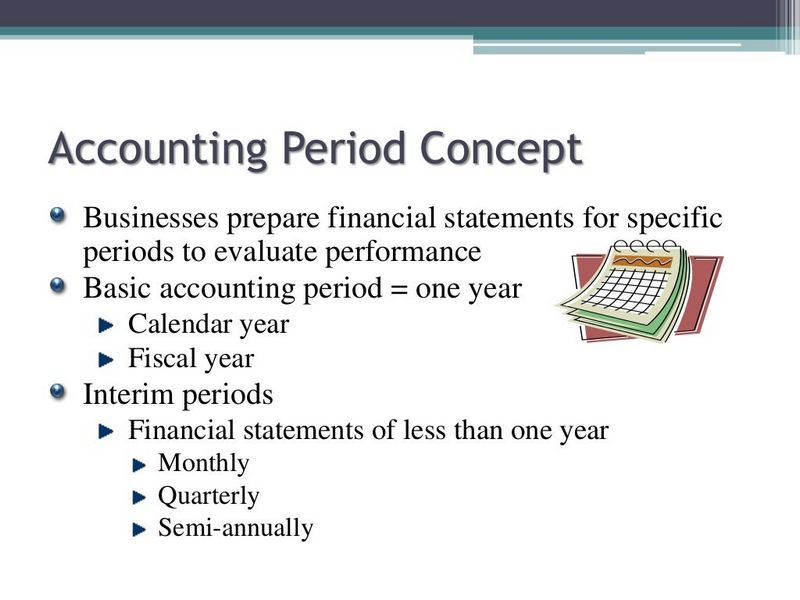
Videos have the advantage of capturing a dynamic scene and can provide a more comprehensive view of the events leading up to and following an incident. This can be particularly useful when reconstructing accidents or understanding the sequence of events. Videos can also capture audio and other details that may not be visible in photographs, enhancing the overall understanding and evaluation of a claim.
The Process:
The use of photographs and videos in the adjusting process involves the collection and analysis of visual data. Insurance adjusters review these visual aids to assess the validity of a claim and determine the appropriate compensation. They carefully examine the damages, compare the visual evidence with the reported losses, and consider any supporting documentation or witness statements. This thorough analysis helps ensure fair and accurate assessments, facilitating a smoother claims settlement process.
Overall, the utilization of photographs and videos not only speeds up the claims process but also enhances transparency and helps prevent fraudulent claims. The visual data serves as a valuable tool in supporting the insurance claims process, enabling a more efficient and effective resolution for all parties involved.
The Role of Photos and Videos in Assessing Damages
Photos and videos play a vital role in the adjusting process, particularly when it comes to assessing damages. They provide visual evidence that is crucial in determining the extent of the damage and the value of property or assets affected.
When an incident occurs, such as a vehicle accident or property damage, adjusters rely on photos and videos to gather objective evidence. These visual records capture the scene as it was at the time of the incident, preserving important details that may be difficult to document later on.
Adjusters use photos and videos to examine the physical condition of the property or assets involved. They can zoom in on specific areas, allowing them to detect any signs of wear and tear, cracks, or other damages. This visual evidence helps assessors to accurately determine the cause and extent of the damages.
In addition to visual inspection, photos and videos also serve as a reference point during the adjusting process. Adjusters can compare the current condition of the property or assets with the pre-incident state, helping them understand the impact of the damages. This comparison is crucial in estimating the repair or replacement costs.
Furthermore, photos and videos provide a visual narrative that enhances the understanding of the incident. Adjusters can study and analyze the sequences and patterns, helping them uncover any hidden damages or potential causes. These visual records serve as a valuable tool for conducting a comprehensive investigation.
In conclusion, photos and videos are integral in the assessing damages process. They provide objective evidence, assist in inspecting and comparing the condition of property or assets, and help in understanding the incident better. Adjusters heavily rely on these visual records to ensure an accurate and fair evaluation of damages and to facilitate a smooth adjusting process.
Visual Proof: Documenting the Extent of Losses
Photographs and videos play a crucial role in the adjusting process, as they provide visual proof of the extent of losses. When an individual or a business experiences a loss due to a natural disaster, accident, or any other unfortunate event, documenting the damages is essential for insurance purposes.
By capturing images and videos of the affected area, adjusters can accurately assess the extent of the loss and determine the appropriate compensation. These visual records serve as tangible evidence that helps insurance companies in making fair and accurate claim settlements.
Photographs allow adjusters to examine the damages in great detail, zooming in on specific areas, and assessing the severity of the losses. They provide a visual representation of the conditions before and after the event, which helps in comparing and evaluating the impact of the incident.
Videos, on the other hand, provide a dynamic perspective of the damages. They can capture the overall scene, showcasing the destruction caused from different angles and viewpoints. This allows adjusters to gain a better understanding of the scale and magnitude of the losses, which can be difficult to comprehend through static photographs alone.
Furthermore, photographs and videos also provide a chronological timeline of the damages. By documenting the progression of the loss over time, adjusters can analyze the patterns and determine the cause and effect relationship. This helps in verifying the validity of the claims and preventing any potential fraudulent activities.
In conclusion, the use of photographs and videos as visual proof in the adjusting process is essential for accurately documenting the extent of losses. They provide tangible evidence that aids in fair and accurate claim settlements, allowing insurance companies to fulfill their obligations in a transparent and efficient manner.
Improving the Claims Settlement Process
Incorporating photographs and videos into the claims settlement process can greatly improve the efficiency and accuracy of adjusting. By providing visual evidence of the damage or loss, photographs and videos allow adjusters to make more informed decisions and evaluate claims more accurately.
With the use of photographs and videos, adjusters can better understand the extent of the damage, assess the cause of the loss, and determine the appropriate settlement amount. This streamlined process reduces the need for manual inspections and minimizes the potential for human error, resulting in faster claim resolutions and improved customer satisfaction.
The inclusion of photographs and videos also benefits policyholders by providing a transparent and objective record of their claim. They can easily share visual evidence with the adjuster, ensuring a clear understanding of the situation and preventing disputes or delays in the settlement process.
In addition, the use of technology facilitates the submission and storage of photographs and videos. Mobile apps and online platforms allow policyholders to upload visual evidence directly to the adjuster, eliminating time-consuming paperwork and enabling adjusters to access the information quickly and remotely. This streamlined process reduces administrative burdens and expedites the claims settlement process.
Overall, incorporating photographs and videos into the adjusting process improves efficiency, accuracy, and transparency in the claims settlement process. By leveraging visual evidence, adjusters can make more informed decisions, policyholders can receive faster and fairer settlements, and insurance companies can enhance their customer service and satisfaction.
Visual Content: Increasing Accuracy and Objectivity
Visual content, such as photographs and videos, plays a crucial role in the adjusting process. It provides a clear and detailed visual representation of the subject matter, which can greatly increase the accuracy and objectivity of the assessment.
When adjusting claims, insurance professionals rely on various types of visual content to accurately determine the extent of damages and evaluate the validity of the claim. By examining photographs and videos, adjusters can gather essential information that may not be apparent through written documentation alone.
Visual content allows adjusters to see the actual condition of the property or items being claimed, capturing details that may have been overlooked or omitted in written reports. This visual evidence helps reduce the chances of subjective interpretations or misinterpretations, as it provides a more objective representation of the reality.
By incorporating visual content into the adjusting process, insurance professionals can also ensure consistency in their assessments. By having a standardized approach to evaluating claims using visual evidence, adjusters can compare and contrast different cases more easily, leading to fair and unbiased outcomes.
In addition, visual content can also aid in the communication and understanding of the adjusting process. By sharing photographs or videos with policyholders, the insurance professional can better explain the findings and help policyholders understand the reasoning behind the assessment. This transparency can help build trust and credibility between the insurer and the insured, facilitating a smoother claims process.
Overall, visual content is an essential tool in the adjusting process. It increases accuracy by providing an objective representation of the subject matter, reduces subjectivity and bias, and aids in communication and understanding. By incorporating visual content into the adjusting process, insurance professionals can ensure fair and efficient claim settlements.
The Role of Visual Media in Claims Investigations
Visual media, such as videos and photographs, play a crucial role in the claims investigations process. They provide valuable evidence and documentation that can support or refute a claim.
Videos enable investigators to see the sequence of events, capturing important details that might have been missed in written or verbal descriptions. They provide a visual record of the incident, allowing investigators to analyze the situation more objectively and accurately.
Photographs, on the other hand, freeze a specific moment in time, providing a detailed visual representation of the scene. They can showcase the extent of damage or injuries, highlight any negligence or wrongdoing, and even establish the timeline of events.
Both videos and photographs can be used to reconstruct accidents, validate or dismiss claims, and provide a comprehensive and unbiased representation of the incident. They can also be invaluable tools for insurance adjusters, attorneys, and other parties involved in the claims process.
- Visual media acts as a powerful deterrent against fraudulent claims, as it is difficult to forge or manipulate visual evidence.
- It assists in the accurate assessment of damages, ensuring that claimants receive appropriate compensation.
- It facilitates the resolution of disputes, as visual evidence can provide a clear depiction of the events that took place.
- It reduces the need for lengthy and costly investigations by providing a concrete record of the incident.
In conclusion, the role of visual media, including videos and photographs, in claims investigations cannot be understated. They provide an objective and reliable means of documenting and analyzing incidents, ensuring a fair and efficient adjusting process.
Streamlining the Documenting and Assessing Process
The adjusting process can be time-consuming and complex, especially when it comes to documenting and assessing the damages. However, the use of photographs can greatly streamline this process.
By capturing images of the damages, adjusters can gather visual evidence that can be easily referenced and analyzed. This eliminates the need for lengthy written descriptions and reduces the chances of misunderstandings or misinterpretations.
In addition, photographs allow adjusters to document the damages in real-time, ensuring that no details are overlooked. With the advancements in camera technology, high-resolution images can be captured, providing clear and detailed visual records.
Furthermore, the use of videos can enhance the documenting and assessing process even further. Videos provide a dynamic perspective, allowing adjusters to showcase the damages from different angles and capture any relevant movements or changes.
Overall, the integration of photographs and videos into the adjusting process streamlines the documenting and assessing phase, saving time and improving accuracy. Adjusters can focus more on analyzing the damages and providing efficient resolutions, leading to a more efficient overall claims process.
Visual Documentation: A Valuable Tool for Adjusters
Photographs and videos play a crucial role in the adjusting process. They provide adjusters with a visual record of the scene or incident, allowing them to accurately assess and investigate the situation. Visual documentation can greatly enhance the accuracy and efficiency of the adjusting process, leading to more effective claim settlements.
One of the main benefits of visual documentation is that it helps adjusters capture important details that may not be evident in written reports or verbal descriptions. By documenting the scene or damage through photographs or videos, adjusters can capture the extent of the damage, the condition of the property, and any relevant factors that may impact the claim.
Visual documentation also allows adjusters to compare the before and after states of the subject, providing a clear picture of the impact and changes that occurred. This can be particularly useful in cases of property damage or personal injury claims, where the visual evidence can help establish the cause and severity of the incident.
In addition to aiding the assessment process, visual documentation can also serve as valuable evidence during claim disputes or litigation. Photographs and videos can be presented in court to support an adjuster’s findings and bring clarity to the case. This visual evidence is often more persuasive and compelling than written statements alone.
To effectively utilize visual documentation, adjusters need to ensure they capture the necessary details and maintain accurate records. This may involve taking multiple photographs from different angles, using close-ups to capture specific details, or recording videos that provide a comprehensive view of the scene. Adjusters should also document the date, time, and location of each visual capture to establish a clear timeline.
In conclusion, visual documentation, including photographs and videos, is a valuable tool for adjusters. It enhances the accuracy and efficiency of the adjusting process by providing an objective and comprehensive record of the scene or incident. By using visual evidence, adjusters can better assess and investigate claims, leading to more effective claim settlements and resolution.
Enhancing Customer Satisfaction with Visual Evidence
Photographs and videos play a critical role in the adjusting process by providing visual evidence of damages and losses. These visual aids allow adjusters to accurately assess the extent of the damage and the necessary steps to be taken for a successful claim. Not only do photographs capture the evidence in a clear and concise manner, but they also help to expedite the claim process.
Visual evidence serves as a powerful tool in enhancing customer satisfaction. When customers are provided with visual evidence, they can better understand the scope of the damages and how their claim is being handled. This transparency fosters trust and confidence in the insurance company, leading to increased customer satisfaction.
Furthermore, visual evidence can be easily shared with customers, allowing them to stay informed about the progress of their claim. Adjusters can provide customers with photographs and videos, enabling them to see firsthand the steps being taken to address their claim. This level of communication and transparency helps to alleviate any concerns or doubts the customer may have, resulting in enhanced satisfaction with the claims process.
In addition, visual evidence can also be used to educate customers on the importance of preventive measures. By showing customers the actual damages caused by certain events, such as floods or fires, adjusters can highlight the need for precautionary measures and encourage customers to take appropriate actions to protect their property. This proactive approach not only benefits the customers by minimizing potential losses but also reflects positively on the insurance company in terms of customer satisfaction.
In conclusion, the use of photographs and videos in the adjusting process has a significant impact on customer satisfaction. Visual evidence provides transparency, enhances communication, and educates customers, ultimately leading to increased satisfaction with the claims process. Insurance companies should continue to leverage the power of visual evidence to improve customer satisfaction and build trust with their policyholders.
undefined
How do photographs and videos impact the adjusting process?
Photographs and videos can have a significant impact on the adjusting process. They provide visual evidence that helps adjusters assess damages and determine the appropriate compensation. By analyzing photographs and videos, adjusters can get a clearer understanding of the extent of the damage, which can lead to more accurate settlements.
What role do photographs and videos play in insurance claims?
Photographs and videos play a crucial role in insurance claims. They serve as visual evidence that supports the claimant’s case and helps the insurance company assess the damages. These visual records can provide an objective representation of the incident, helping both parties in the negotiation and adjustment process.
Can photographs and videos be manipulated to deceive adjusters?
While it is possible to manipulate photographs and videos, insurance adjusters are trained to detect signs of manipulation. They often look for inconsistencies, altered timestamps, and other indications of tampering. Additionally, adjusters can request additional evidence or conduct onsite inspections to verify the accuracy of the visual records.
What are the advantages of using photographs and videos in the adjusting process?
Using photographs and videos in the adjusting process offers several advantages. Firstly, they provide a visual representation of the damage, which can be more persuasive than verbal descriptions. Secondly, they help eliminate disputes and misunderstandings by providing clear evidence. Lastly, they facilitate remote assessments, allowing adjusters to evaluate damages without physically visiting the location.
How have advancements in technology impacted the role of photographs and videos in the adjusting process?
Advancements in technology have greatly impacted the role of photographs and videos in the adjusting process. With the accessibility of smartphones and digital cameras, claimants can easily capture and submit visual evidence. Additionally, drones and 360-degree cameras enable adjusters to gather more comprehensive and accurate visual records. These technological advancements have streamlined the adjusting process and improved the efficiency and accuracy of assessments.
How do photographs and videos affect the adjusting process?
Photographs and videos have a significant impact on the adjusting process. They provide visual evidence that can help both the adjuster and the insured to assess and document the extent of damages. By capturing the details of the property or item in question, photographs and videos assist in accurate evaluations, which can determine the amount of compensation or repair necessary. Additionally, they serve as crucial supporting evidence during the claim settlement process.
What role do photographs and videos play in documenting damages?
Photographs and videos play a crucial role in documenting damages. They provide visual proof of the condition of the property or item before, during, and after an incident. This documentation helps in establishing the extent and nature of the damages, allowing for an accurate analysis of the situation. Detailed photographs and videos also aid in verifying the authenticity of claims and preventing fraudulent activities. Overall, they serve as a reliable means of capturing and preserving evidence during the adjusting process.

